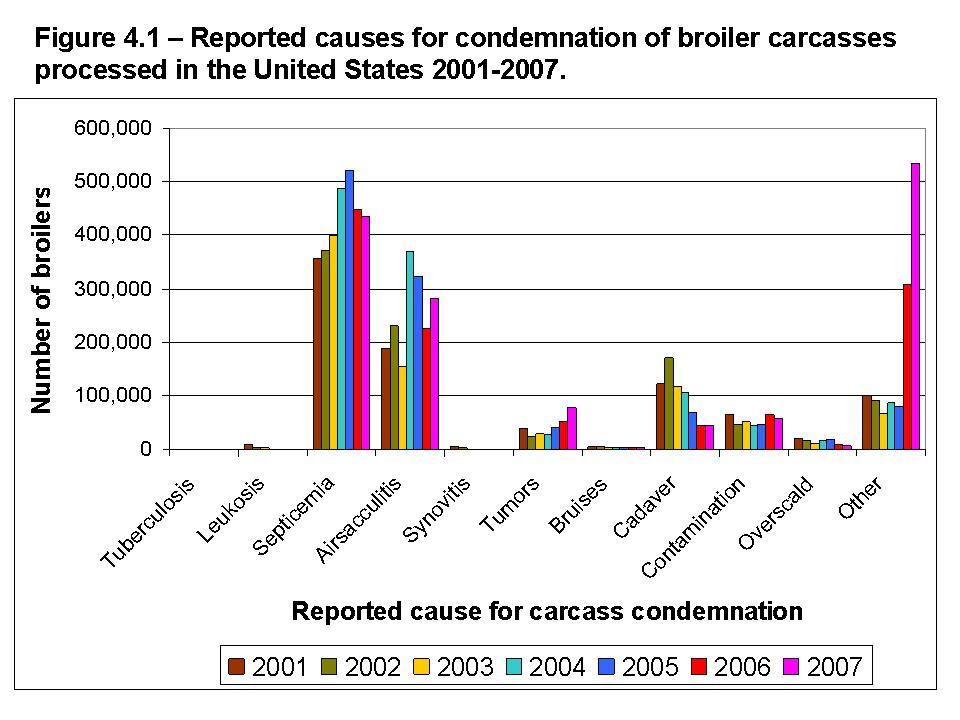Chapter 4 - Tuberculosis
Chapter 4 - Tuberculosis
USDA inspectors will condemn any carcasses with gray to yellow nodules attached to the intestine as this could be an indication that the broiler was infected with avian tuberculosis (TB). The disease has been found worldwide, including the U.S. where most of the incidences have occurred in flocks of the north-central states. Today TB has been largely eradicated in broilers in the U.S. (see Figure 4.1) but may still be found in mature chickens. Diet and feed management may play roles in the incidence of the disease. Most of the recent outbreaks have occurred in chickens reared outside in fenced pens or ranging free around buildings and were maintained on mixed cereal grains only. Feeding chickens on the ground, and their habit of digging in the dirt, are obvious contributory factors of infection from the environment. Feeding a complete and well-balanced ration significantly reduces the incidence of avian tuberculosis in broiler flocks.

Avian tuberculosis is a bacterial infection caused by Mycobacterium avium which is closely related to the human and bovine tuberculosis bacteria. Morbidity and mortality are often high in infected flocks. Transmission is via fecal excretion, ingestion, inhalation, offal and fomites (i.e., inanimate objects that can transmit infectious material such as boots, overalls, equipment). The disease has a slow course through a flock. The bacterium resists heat, cold, water, dryness, pH changes and many disinfectants.
Clinical signs of avian tuberculosis include:
- Severe loss of weight with no loss of appetite
- Pale comb
- Diarrhea
- Lameness
- Sporadic deaths
The common localization of tuberculosis nodules in the abdominal organs occurs because birds acquire tuberculosis through ingestion of the organism rather than through inhalation. This route of infection also helps to explain the low incidence of pulmonary lesions in birds when compared to mammals in which the lung is infected first. Avian TB can infect humans but is not considered a threat to people with healthy immune systems. In birds, M. avium causes a chronic debilitating disease with tubercular nodules. In humans, M. avium infections can cause local wound infections with swelling of regional lymph nodes. The infection is most severe in immunocompromised individuals. M. aviumis spread by ingestion of food or water contaminated by feces from shedder birds.
